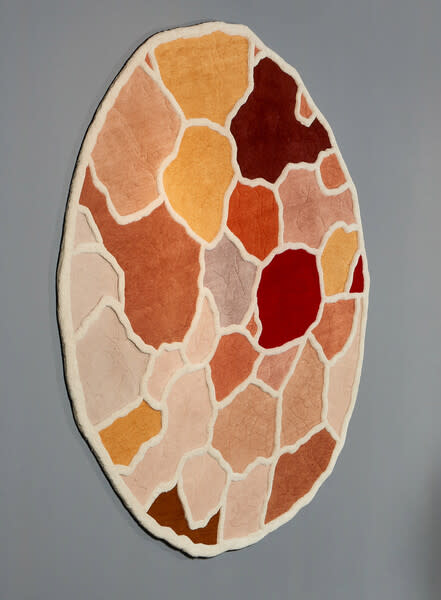The Milan designer draws inspiration from his native Ethiopia to create sculptural wooden seating and hand-tufted rugs.


Abreham Brioschi isn’t concerned about imperfections. He’s much more focused on creating “products that have their own narrative,” says the 26-year-old designer, who graduated from Nuova Accademia delle Belle Arti in 2022, the same year he exhibited his first three-piece collection at Milan Design Week. The guiding force of his work is translating traditional shapes and concepts from his native Ethiopia into functional furniture. “African design is extremely attentive to details and materials, to waste and functionality,” Brioschi says. His first and second collections consist of sculptural wooden seating designs, like the Lefleté chair, with its crescent-shaped platform, which references headrests used for centuries in Ethiopia and other parts of eastern Africa to safeguard elaborate hairstyles during sleep.
“Wood was the first material I experimented with, both because I have been passionate about it since I was little and because it is the most commonly used material in African design,” says Brioschi. Though wood plays a central role in his prior collections, a recent project with Italian rug company Nodus, which debuted at this year’s Milan Design Week, led him to branch out.
The new collection features three hand-tufted wool rug designs. There are the rectangular Scarification Mursi and Suri rugs, with textural, woven patterns in deep brown, tan, and beige tones that mimic skin markings formed in scarification processes. (The designer’s debut included a textured wooden chair that also references scarification.) The third rug from the collaboration, Dancalia, references what Brioschi calls “the most visually striking place in Ethiopia”: the Danakil Depression, known for its sulfurous hot springs and salt flats. The rug’s circular shape comprises amorphous sections in deep browns, beiges, pale pinks, burnt reds, and ochres that “represent the salt channels that make up the landscape,” says Brioschi; white outlines represent the salt. The palette might “not be entirely faithful to the colors of the Danakil, but I tried to find and explore the most suitable shades for a more elegant and modern context,” he says.
In the future, Brioschi plans to tackle new forms and incorporate new materials into projects, including Italian marble and Murano glass—and not only because they’re “readily available in Italy,” he says. “For me, it is very important to combine my African roots with Italian ones.”
You can learn more about Abreham Brioschi by visiting the studio’s website or on Instagram.
Top photo courtesy Abreham Brioschi








